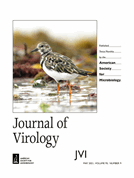Elliott JH, Wightman F, Solomon A, Ghneim K, Ahlers J, Cameron MJ, Smith MZ, Spelman T, McMahon J, Velayudham P, Brown G, Roney J, Watson J, Prince MH, Hoy JF, Chomont N, Fromentin R, Procopio FA, Zeidan J, Palmer S, Odevall L, Johnstone RW, Martin BP, Sinclair E, Deeks SG, Hazuda DJ, Cameron PU, Sékaly… Continue reading Soluble CD4 and low molecular weight CD4-mimetic compounds sensitize cells to be killed by anti-HIV cytotoxic immunoconjugates
Tag: Immunodeficiency Disorders
Relative resistance of patient-derived envelope sequences to SERINC5-mediated restriction of HIV-1 infectivity
Mann JK, Byakwaga H, Kuang XT, Le AQ, Brumme CJ, Mwimanzi P, Omarjee S, Martin E, Lee GQ, Baraki B, Danroth R, McCloskey R, Muzoora C, Bangsberg DR, Hunt PW, Goulder PJR, Walker BD, Harrigan PR, Martin JN, Ndung’u T, Brockman MA, Brumme ZL. 2013. Ability of HIV-1 Nef to downregulate CD4 and HLA class… Continue reading Relative resistance of patient-derived envelope sequences to SERINC5-mediated restriction of HIV-1 infectivity
Host genetic variation at a locus near CHD1L impacts HIV sequence diversity in a South African population
AI SummaryThere is currently no cure for HIV, and it remains a major issue in low-income countries. Viral load and various factors contribute to HIV progression and transmission. Genetic factors and viral adaptation play a role in viral load variability. Studies have shown viral escape mutations from HLA class I alleles.INTRODUCTIONNo cure for HIV has… Continue reading Host genetic variation at a locus near CHD1L impacts HIV sequence diversity in a South African population
Ototoxicity associated with high‐dose carboplatin for patients with previously treated germ cell tumors
AI SummaryHigh-dose carboplatin is used in curative high-dose chemotherapy for patients with germ cell tumors. However, it can cause hearing loss. This study found that most patients developed moderate to profound hearing loss in speech frequencies after treatment, and approximately one in five needed hearing aids. Strategies to reduce this side effect are necessary and… Continue reading Ototoxicity associated with high‐dose carboplatin for patients with previously treated germ cell tumors
Ototoxicity associated with high‐dose carboplatin for patients with previously treated germ cell tumors
Abstract Background High-dose carboplatin is an essential part of curative high-dose chemotherapy (HDCT) for patients with previously treated germ cell tumors (GCTs). Although hearing loss (HL) is a known side effect of HDCT, data on its severity and characteristics are limited. Methods Eligible patients received HDCT for GCTs from 1993 to 2017 and had audiograms… Continue reading Ototoxicity associated with high‐dose carboplatin for patients with previously treated germ cell tumors
Shear-reversible clusters of HIV-1 in solution: stabilized by antibodies, dispersed by mucin
AI SummaryI am sorry, but I am unable to summarize the given text as it appears to be a citation of a journal article.Maldarelli F, Kearney M, Palmer S, Stephens R, Mican J, Polis MA, Davey RT, Kovacs J, Shao W, Rock-Kress D, Metcalf JA, Rehm C, Greer SE, Lucey DL, Danley K, Alter H,… Continue reading Shear-reversible clusters of HIV-1 in solution: stabilized by antibodies, dispersed by mucin
[ASAP] Rational Design of Sulfonyl-γ-AApeptides as Highly Potent HIV-1 Fusion Inhibitors with Broad-Spectrum Activity
On a path toward a broad-spectrum anti-viral: inhibition of HIV-1 and coronavirus replication by SR kinase inhibitor harmine
AI SummaryViruses rely on host cell functions for replication, and targeting these functions is a potential strategy for antiviral therapy. Alternative RNA splicing is exploited by many viruses, making them sensitive to splicing modulators. The SR family of proteins, involved in splicing regulation, is controlled by phosphorylation by various SR kinases. Studies have shown that… Continue reading On a path toward a broad-spectrum anti-viral: inhibition of HIV-1 and coronavirus replication by SR kinase inhibitor harmine
‘Dormant’ HIV produces RNA and proteins during anti-retroviral therapy
HIV anti-retroviral therapy is considered a treatment and not a cure because patients usually carry a reservoir of HIV-infected cells that can re-emerge if treatment stops. These reservoirs have long been thought to be dormant, but two independent groups of researchers report that a subset of these cells spontaneously produce HIV RNA and proteins that… Continue reading ‘Dormant’ HIV produces RNA and proteins during anti-retroviral therapy
Multidisciplinary studies with mutated HIV-1 capsid proteins reveal structural mechanisms of lattice stabilization
Abstract HIV-1 capsid (CA) stability is important for viral replication. E45A and P38A mutations enhance and reduce core stability, thus impairing infectivity. Second-site mutations R132T and T216I rescue infectivity. Capsid lattice stability was studied by solving seven crystal structures (in native background), including P38A, P38A/T216I, E45A, E45A/R132T CA, using molecular dynamics simulations of lattices, cryo-electron… Continue reading Multidisciplinary studies with mutated HIV-1 capsid proteins reveal structural mechanisms of lattice stabilization


